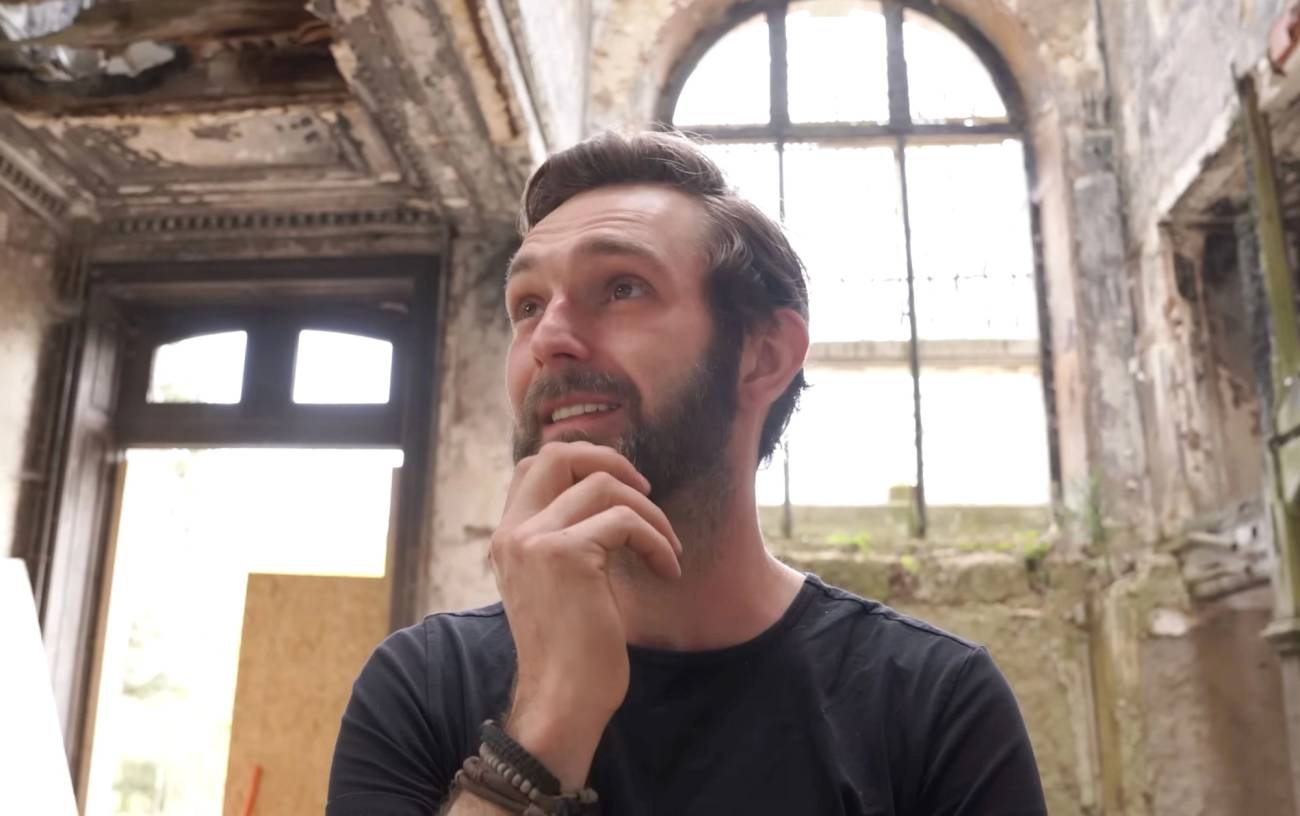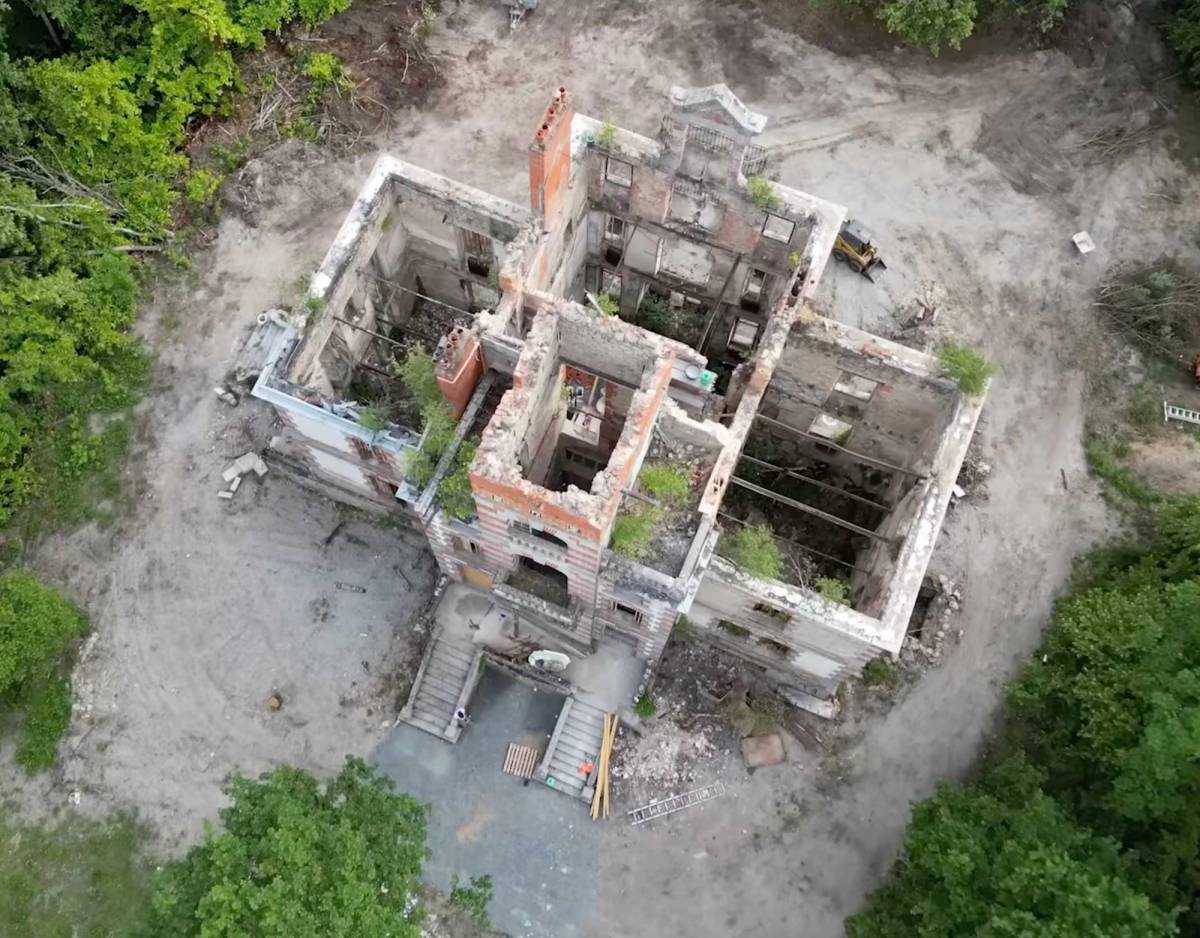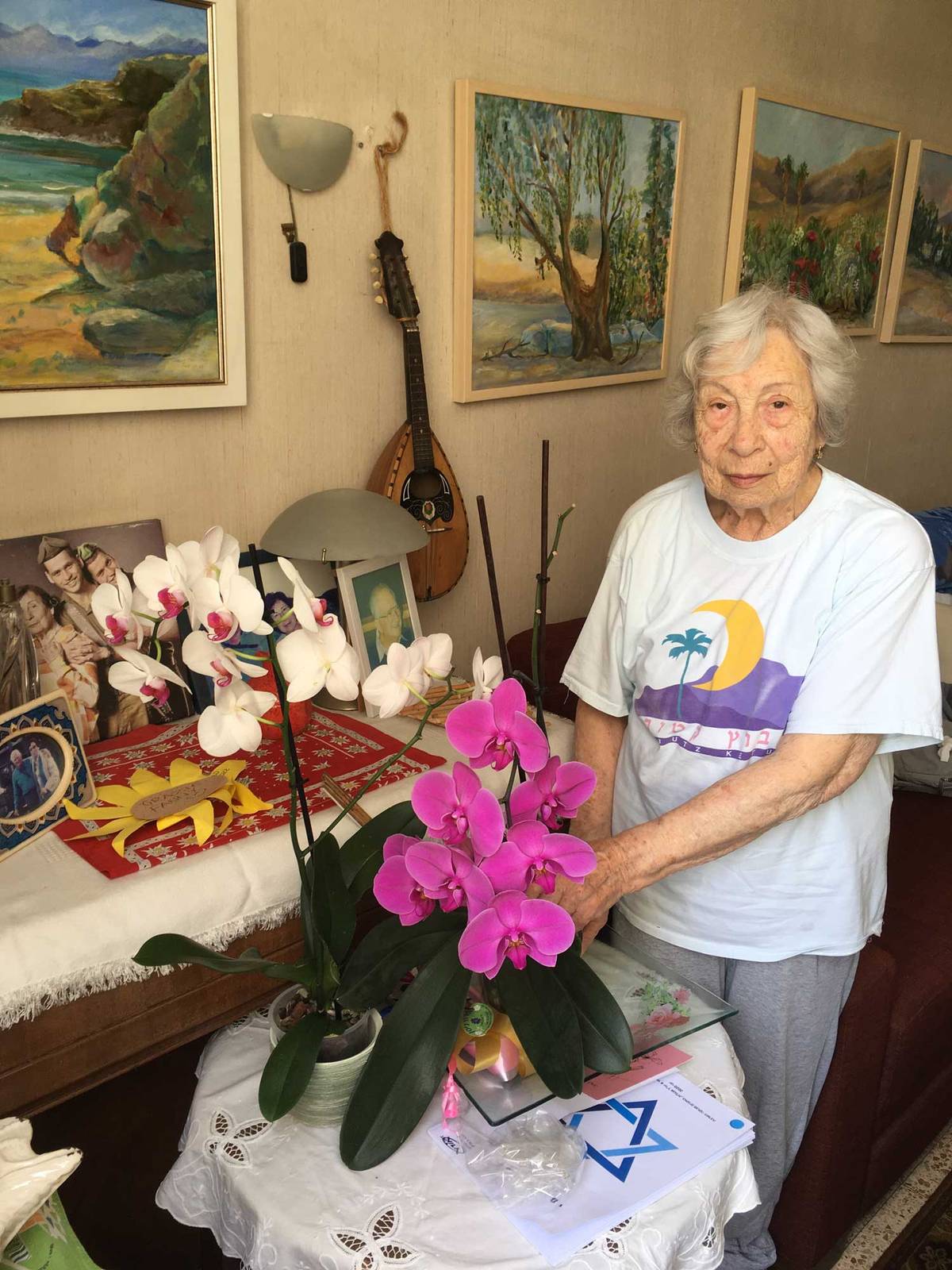Saving a Building That Saved Hundreds of Children
Château de Chaumont was a sanctuary for young Jews fleeing the Nazis. Now a British contractor is restoring the French mansion, and documenting his renovations online.



At age 13, Fanny Ben-Ami—herself a refugee from the Nazis—rescued 15 children during the Holocaust. Her epic tale of survival has touched audiences via a children’s book, a feature film, sketches, paintings, and countless testimonies. Recently, however, a contractor’s passion project thrust a chapter of Ben-Ami’s saga from literal ruins into the social media spotlight.
Now 93, Ben-Ami is among the few living beneficiaries of the WWII-era efforts of the Oeuvre de Secours aux Enfants—the Children’s Aid Society. During the Shoah, this Jewish French humanitarian organization, commonly known as the OSE, brought Ben-Ami to safety in the French countryside. Over several years, the OSE nurtured more than 200 refugee children at the towering Château de Chaumont, a grand, seven-story manor—including Ben-Ami’s younger sisters, Erika, now 91, and Georgette, who died in 2015. They never saw their parents again.
The estate fell into disrepair after a fire ravaged the building in the mid-1980s. It sat in shambles until it was sold in 2022 to a British ex-pat named Daniel Preston, a trained chef. For his YouTube channel, “Escape to Rural France,” in which he also renovates a stone farmhouse, Preston filmed a visit to Chaumont in 2021. The self-taught builder has since posted more than 100 videos revealing the painstaking removal of Chaumont’s debris, trees, bees, and bathroom fixtures dangerously perched at perilous heights.
“I really appreciate what he’s doing,” Ben-Ami said after watching excerpts of Preston’s videos. “The château was part of my life. And not just me—72 children,” at the time she lived there. (Throughout the war, the children’s ranks fluctuated until a newly installed local village priest betrayed them to Nazi officials.)
Since 2021, Preston’s channel has captured upwards of 34 million views. Rebuilding floors, laying bricks, and solving structural dilemmas have attracted more than 850 Patreon subscribers seeking additional content. Tree surgeons and friends from another channel, “The Château Diaries,” where Preston appeared as a gardener, make cameos. With YouTube ad revenues and “cups of coffee” tips, total monthly income exceeds $8,000.
“I really wasn’t expecting it to go that far,” said Preston, 33, who also posts on Instagram.
Chaumont is one of 14 châteaux the OSE operated as children’s shelters. “Most of the war homes still exist in a more or less derelict state, most of them, private properties,” said OSE’s Paris Archivist Dominique Rotermund. “Once these homes had to be closed in 1943, the association found many different hiding places for the children. The number of saved children is around 2,000.”
During the war, Chaumont provided its young transplants surrogate family. “There, we forgot the war,” said Ben-Ami, now a widowed grandmother of six and great-grandmother of two. “And what we always say, by day, we were laughing. And by night, we were crying.”
Through underground networks, the OSE spirited children to Spain, Switzerland, and the U.S. Many of those, like Ben-Ami, link their survival to Château de Chaumont. Among them were Ralph Moratz and Wolfgang Grajonca, the last to be accepted into foster homes after a harrowing sailing to New York. The friends eventually fell out of touch. Moratz was unaware that Grajonca had Americanized his name: Picking a name out of a Bronx phone book, he became Bill Graham, the renowned promoter of shows for Janis Joplin, Jefferson Airplane, Jimi Hendrix, and other rock legends. Graham’s milestones include the 1985 LiveAid concert in Philadelphia and multiple Amnesty International tours that raised millions in charitable contributions and heightened awareness about political injustice.
After Graham died at 60 in a 1991 helicopter crash in Vallejo, California, media reported his origins. Moratz, a Hollywood background actor who became a loan officer and computer programmer, rediscovered his lost friend and documented their connection in a blog and subsequent videos for a multicity exhibit titled Bill Graham and the Rock & Roll Revolution. Although Moratz died soon after, his blog remains accessible, as does his archive at the Leo Baeck Institute in New York City.
“Ralph’s enthusiasm for connecting with Bill was inspiring because Bill didn’t remember the first 10 years of his life, but Ralph did,” Graham’s son David, 54, said from his home near New Hope, Pennsylvania.
Admitted posthumously to the Rock & Roll Hall of Fame, his father’s legacy continues through the Bill Graham Memorial Foundation and an autobiography.
“We look forward to telling his story because there are so many remarkable events nobody knows about,” said David Graham, who, with his brother Alex, is exploring creating a documentary and other projects. “He was a master of mass congregation. Peter Coyote called him a mix between Mother Theresa and Al Capone. If you add up all the tickets to his shows, he touched more people with music than died in the Holocaust.”
In 1975, Graham ignited a global phenomenon by funding the first public menorah lighting outside Israel. “When Chabad asked Bill Graham to build a 22-foot ‘Mama Menorah’ and light it every year in the heart of San Francisco, he underwrote the entire thing and never looked for recognition,” said SF Chabad Rabbi Yosef Langer. “Only after he passed, we named it the Bill Graham Menorah. That one menorah spread its light far, inspiring thousands of others, from Buckingham Palace to the shores of Oahu.”
Like Moratz, who appeared in the blockbuster Independence Day and many other projects, Graham also earned Hollywood screen credits in Bugsy, The Doors, and Apocalypse Now. Their love of theatrics can be traced to Chaumont. Managed by resistance fighter Lotte Schwarz, whose room was on the fourth floor, counselors instructed children to hide their Jewish identity outside the château. But at Chaumont, they engaged in everything from sports, foraging herbs, and other survival skills to music, literature, and Purim shpiels.
“We thought we would stay there forever,” said Ben-Ami, whose room among the older children was on the third floor.
Currently, English TV is profiling Preston’s renovation for a future broadcast. With such a large building, his goal is to remain off-grid to reduce costs. An on-site well yields water and a sponsor provided solar panels, but 40 windows, staircases, wiring, and plumbing require reinstallation, not to mention a roof and turret. Preston expects it may take five years to complete 90% of the work. “I don’t think it will ever be done,” he added.
This isn’t the first time Chaumont has required reinforcements. The OSE, too, repaired windows and plumbing, as cited in Rescuing Jewish Children During the Nazi Occupation in OSE Children’s Homes 1938-1945.

At the entrance to rue de Chaumont, a plaque commemorates its significance. “Preserving authentic sites, structures, and artifacts from the Holocaust highlights their historic relevance and is one way of connecting the past to the present,” said Yad Vashem spokesperson Simmy Allen.
Years ago, OSE vice director, Eric Ghozlan, then-director of the Childhood Department, visited Chaumont to explore purchasing it for a summer camp, “in keeping with the château ’s legacy,” said OSE historian Katy Hazan. “The project was not feasible due to the extensive renovations required and the high financial costs. Should the place once again welcome and benefit children, it would indeed be very meaningful for us.”
Preston hopes to bring kids back, too. Chaumont hosted a summer camp for disadvantaged children in the 1950s and ’60s. “With all the support we have online, we could support some kind of an academy—for kids who can come for the summer and learn skills,” Preston said.
French comedian Popeck, 87, was 4 when the OSE escorted him and other young refugees to Chaumont. “I am happy to learn that the château is being renovated by a contractor who hopes to make it a summer residence for children in need,” said Popeck, aka Judka Herpstu, whom Ben-Ami remembers from Chaumont. He returned to Paris, as did noted psychologist Claire Meljac, 89. (She was not available to comment due to health complications.)

Renovating by day and editing at a nearby Airbnb by night, Preston’s sign-off is a signature YouTube move, a cheeky high-five over the lens. The father of two young boys, he recently separated from their mother, his partner of 14 years, making the project “deeply personal,” Preston said. “I am rescuing the building, but the building is also rescuing me. If I don’t do a video one day, I feel so lost. It’s like keeping a diary but instead of writing down what you do every day … you go back and see the day in the best possible light.”
Cinematic shots flaunt sweeping aerial views and close-ups of the majestic scenery, the ruin itself, and the machinery reviving it. Thick woods surround the château with a verdant cloak, fitting the metaphor of a storybook legend returning to life. “It really struck me as soon as I saw it,” said Preston, who dates the château to 1886. “It was just magical.”
Ben-Ami felt something similar when she visited the neglected property with fellow survivors in 1995. “We went through the gate and it was a sleeping beauty,” she recalled.
In 2019, Yad Vashem honored Ben-Ami’s wartime heroism. Eluding German troops in 1943, she led children by foot over the Swiss border and, in the process, identified an informer, saving the lives of 150 members of the French underground.
As her next act, Ben-Ami is writing her memoirs. Naturally, she said, “The château is in it.”
Award-winning journalist Lisa Klug is the author of the bestselling pop culture titles Cool Jew, a National Jewish Book Award Finalist, and Hot Mamalah: The Ultimate Guide for Every Woman of the Tribe. Her work has appeared in many outlets, including The Atlantic, Forbes, Forward, Huffington Post and The Los Angeles Times, as well as The New York Times, The Times of Israel, and Variety, where she is a stringer. Visit her Facebook page, or follow her on Twitter @lisaklug.